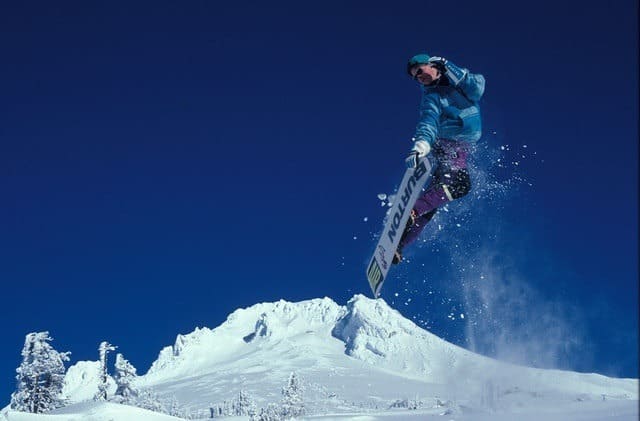There are two things most people think when they hear the word snowboarding: usually it’s “that looks cool” followed closely by “that seems hard”. However, with expert instruction and plenty of practice, almost anybody can become a snowboarding pro.
Read on for a few tips geared towards both beginners and intermediate snowboarders.
Goofy or Regular? Determining Your Lead Foot
Have a friend gently shove you from behind – whichever foot you use to step forward first is your lead foot. Regular means leading with your left foot while goofy means leading with your right. Rides are easier when your snowboard is set up correctly, according to which leg you lead with.
Get Yourself Some Protective Gear
For adults learning to snowboard, it’s best to invest in a pair of lacrosse shorts and wrist guards. Both items can be purchased with minimal damage to your wallet at most major sporting goods shops. Lacrosse shorts are similar to bicycle shorts but are equipped with removable pads that protect the hips, crotch, thighs, and the tailbone. For snowboarding, you’ll only need the hips and tailbone protection for those repeated falls on your butt or your hands. Wrist guards can alleviate some of the pressure your wrists will feel – just make certain that they’ll fit comfortably under your mittens.
Check the Conditions
Learning how to snowboard during hard or icy conditions is possible but ill-advised for beginners. If you can avoid learning during extreme conditions, do so. These factors are completely avoidable depending on the time of day or season. You’ll want to practice on soft snow or fresh snow, so check the reports before heading up the slopes.
Falling
Learning how to snowboard, you will invariably find yourself falling plenty of times. Try to fall uphill instead of downhill – this prevents you from rolling down the slope. It’s also better to fall on your back than on your face with the hopes of landing on your arms or hands. Try to avoid falling on your tailbone, which can cause a lot of pain. If you feel yourself falling, don’t fight gravity: stay relaxed and avoid putting your hands out to stop the fall – this can cause serious harm to your wrists.
Perfect Your Stance
Avoid being too rigid or stiff while on your snowboard, as this is going to lead to nothing but muscle aches and pains after a handful of hours. Snowboarding should be a fluid action that allows you to sail over slopes and snow lumps with ease. Find the most comfortable distance you can have with your feet on the board that doesn’t feel unstable or make it too hard to move around. Stand with slightly bent knees and with arms hanging loosely at your sides, keeping your shoulders, neck, and hands relaxed.
Look Where You Want To Go
… And not down on the snow. Your shoulders should follow the direction your head is turned in, your hips should follow your shoulders, and your board will consequently follow your hips. Therefore, it’s best to look up while standing on the board. Keeping your head raised and your eyes on the target will help you position your snowboard correctly, as well as keep your body and weight in the right position on your snowboard.
As a final piece of advice: don’t be afraid to take snowboarding lessons
. Everyone needs some help every once in a while and knowledgeable, dedicated instruction can get you on track to becoming a pro in no time.

